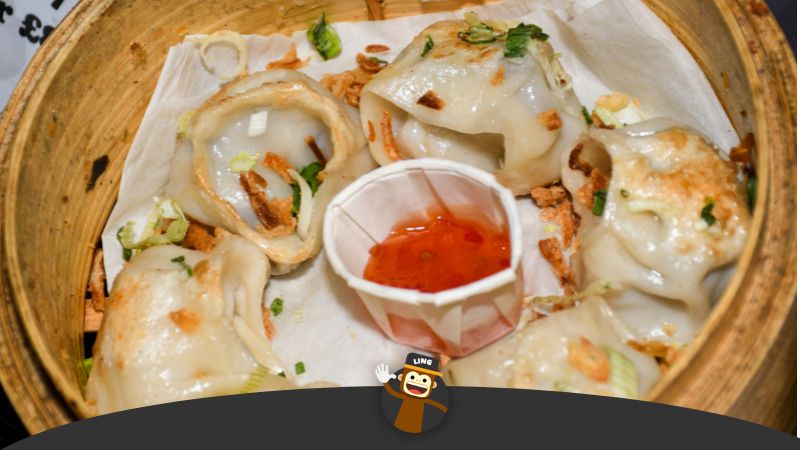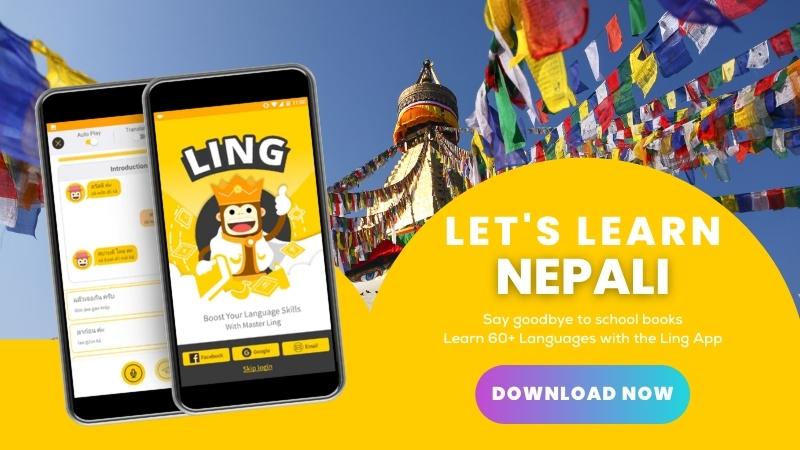Several South Asian countries have specific verbs for cooking. The Nepali language is no exception, and Nepali cooking verbs are crucial to describe recipes and cooking techniques. The result is mouth-watering dishes.
Let’s check out some of these foods!
Like me, eating is an important part and reason for learning to cook. Be it traditional foods for special occasions or just a craving for a dish you haven’t had in a long time – it is an urge that needs answering! But if you are learning from a Nepali video or a neighbor or friend who speaks the Nepali language, it would be a good idea to know the difference between stirring, simmering, whipping, and boiling. This is why you need to know some Nepali cooking verbs.
Verbs are a vital part of all languages. Meals are essential to daily life (at least, it is for most people!). To create various types of food, you need to know the instructions well. In Nepali culture, you will find a side dish along with the main dishes. Just one dish for a meal is pretty much – well, disgraceful. You are expected to have several dishes for a meal, starting with rice. In Nepali and most South Asian cultures, it is typical to need long hours for food or meal prep!
There are great cooking videos available, but without the knowledge of Nepali cooking verbs, you may make a mistake while cooking. This is why you need an all-inclusive compact list of Nepali cooking verbs.
Your Go-To List Of Nepali Verbs
The purpose of verbs in all languages is the same – they are action words. Here are some examples of terms used for Nepali food preparation with their translation into English to best understand their meaning in the Nepali language.
- Measure (Māpana) – मापन
- Cook (Pakā’unē) – पकाउने
- Pour (Khan’yā’unu) – खन्याउनु
- Add (Thapnuhōs) – थप्नुहोस्
- Stir (Halacala) – हलचल
- Beat (Piṭnu) – पिट्नु
- Steam (Bhāpa) – भाप
- Drain (Nālī) – नाली
- Soak (Bhijnu) – भिज्नु
- Peel (Bōkrā) – बोक्रा
- Dice (Pāsā) – पासा
- Blend (Miśraṇa) – मिश्रण
- Grind (Pīsnu) – पीस्नु
- Fry (Phrā’i) – फ्राइ
- Marinade (Acāra) – अचार
- Taste (Svāda) – स्वाद
- Season (Sijana) – सिजन
- Garnish (Gārnisa) – गार्निस
- Serve (Sēvā garnē) – सेवा गर्ने
- Boil (Umālnu) – उमाल्नु
As you can see from this list, some of the Nepali cooking verbs, like ‘garnish’ (Gārnisa), are a version of the English word, just with a Nepali pronunciation. Looking at this list, you may also begin to understand why it takes so long to cook Nepali foods!
Top Dishes And Nepali Cooking Verbs

From the verb list above, it is clear that Nepali dishes are not a joking matter! It takes precision to create these delicacies. Here are some famous dishes with a brief description of their preparation and details of the ingredients used. Some of the descriptions have verbs that we will later look at.
- Dal Bhat: This is a rice and lentil dish. The lentils are cooked with turmeric and resemble a soup. Dal Bhat is so common in Nepal; it is their national food.
- Meat curry: Most commonly, mutton curry is made of special spices. The flavor sends you spiraling into a daydream. It is a must-try dish among all dishes.
- Vegetables: This is not as spicy and is often served with roti. The vegetables used to make these curries are usually the long green beans and carrots.
- Rice Flour: Sel roti is a food made with rice flour that is very popular in Nepal. It is fried, has some sweetness, and is more like bread than a cake.
- Spicy Chicken: Curries are favorites in South Asia, and Nepal is no exception. Chicken tarkari, a spicy chicken dish, is another yummy one to try with rice or roti. Often boneless chicken is used with ginger paste, garlic, chopped onions, chili pepper, and chilies to add a kick.
- Momo: A plate of hot momos steamed over hot water is the ultimate treat to a fantastic day by the mountains. It is served with a chutney made of chilies and tomatoes that is truly divine.
Nepali food often has dal bhat, vegetables, meat, and potato in curries; paneer, also known as cheese, sesame seeds, and mustard oil, will need staples in your kitchen. You will also need spices, some fish occasionally, a bag of rice always ready to cook, onions, ginger, garlic, and sometimes butter.
Nepali Cooking Verbs Used In Sentences
In the Nepali language, the sentence structure is Sentence Object Verb (SOV). You know the Nepali cooking verbs and you know the famous food, now here they are together in a sentence:
- Peel the potatoes (Ālukō bōkrā) – आलुको बोक्रा
- Stir the chopped onions and spices (Kaṭā pyāja ra masālē halacala) – कटा प्याज र मसाले हलचल
- Let the meat cook for 15 minutes in low heat (Māsulā’ī kama garmīmā 15 minēṭakō lāgi pakā’una dinuhōs) – मासुलाई कम गर्मीमा 15 मिनेटको लागि पकाउन दिनुहोस्
- Add the vegetables to the spices (Masalāharūmā tarakārīharū thapnuhōs) – मसलाहरूमा तरकारीहरू थप्नुहोस्
- Fill two cups of water and add to the meat (Du’ī kapa pānī bharnuhōs ra māsumā thapnuhōs) – दुई कप पानी भर्नुहोस् र मासुमा थप्नुहोस्
- Taste the curry and check for salt (Karī svāda garnuhōs ra nuna jām̐ca garnuhōs) – करी स्वाद गर्नुहोस् र नुन जाँच गर्नुहोस्
- Fry the potatoes and keep separately (Ālu bhunē ra alaga rākhnuhōs) – आलु भुने र अलग राख्नुहोस्
- Cook the rice for 20 minutes (20 Minēṭakō lāgi cāvala pakā’unuhōs) – 20 मिनेटको लागि चावल पकाउनुहोस्
- Serve the foods hot (Khānā tātō sēvā garnuhōs) – खाना तातो सेवा गर्नुहोस्
Learn Nepali With Ling

If you ever want to visit India, also plan to visit Nepal. The languages and culture are similar, Nepali food is delicious, and the locals are a delight. Nepal is a beautiful country, and learning the Nepali language is worth trying.
To support your language learning experience and help you choose the best Nepali food, the right Nepali cooking verbs, and create a plan to learn Nepali with Ling, the best language learning app. It is a gamified app filled with lessons, sentence structure, definitions, and examples, and it’s all free! Read our blogs about the Nepali language to know more about this beautiful culture.
Your favorite mouth-watering dish is right around the corner, with Ling as your guide. Enjoy good food and save money on meals by speaking like the locals, cooking your own meals, and giving recipes to friends using Nepali cooking verbs with the help of Ling. Check out the app today and leave your comment if you have questions!
Download Ling App from App Store or Google Play today!


















